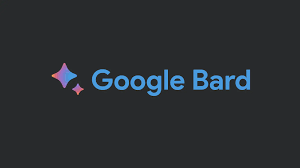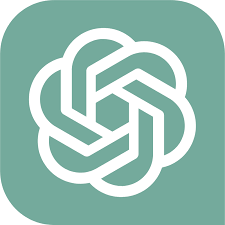The field of artificial intelligence has witnessed remarkable advancements in recent years, leading to the emergence of powerful language models capable of generating human-like text. Two prominent players in this realm are Google BARD and Chat GPT. These AI language models have gained considerable attention and have found diverse applications in various industries. In this article, we will delve into the world of Google BARD and Chat GPT, comparing their functionalities, use cases, limitations, user experience, pricing, and more.
Understanding Google BARD
What is Google BARD?
Google BARD, which stands for "Bidirectional Encoder Representations from Transformers," is an advanced AI language model developed by Google. It leverages state-of-the-art deep learning techniques to generate coherent and contextually relevant text responses.
How does Google BARD work?
Google BARD utilizes a transformer-based architecture, employing both self-attention mechanisms and bidirectional training to understand and generate human-like text. It can comprehend complex sentence structures, recognize contextual cues, and produce meaningful responses.
Key features of Google BARD
- High Contextual Understanding: Google BARD excels in comprehending user queries in various domains and providing accurate responses.
- Language Adaptability: It supports multiple languages, making it accessible to a global audience.
- Large-Scale Training: Google BARD is trained on massive datasets, allowing it to grasp a wide range of topics and provide informed responses.
Unveiling Chat GPT
Introducing Chat GPT
Chat GPT, developed by OpenAI, is an AI language model designed to engage in dynamic and interactive conversations with users. It is based on OpenAI's GPT (Generative Pre-trained Transformer) architecture, which has been fine-tuned for chat-based applications.
How does Chat GPT function?
Chat GPT utilizes deep learning techniques and a transformer-based model to understand user inputs, process the context, and generate human-like responses. It can adapt to various conversational styles and provide informative and engaging interactions.
Notable features of Chat GPT
- Dynamic Conversation Flow: Chat GPT can maintain the context of ongoing conversations, ensuring coherent and contextually relevant responses.
- Multi-Turn Dialogue: It can handle multi-turn conversations, tracking the history of interactions and generating appropriate replies.
- Flexibility in Tone and Style: Chat GPT can mimic different tones and styles, enabling more personalized interactions.
Performance Comparison
Accuracy and Reliability
When it comes to accuracy and reliability, both Google BARD and Chat GPT exhibit impressive performance. However, Google BARD, with its large-scale training and bidirectional training mechanisms, tends to have an edge in understanding complex queries and providing detailed responses.
Language Proficiency and Fluency
In terms of language proficiency and fluency, both models demonstrate exceptional capabilities. They can generate coherent and contextually relevant text, often indistinguishable from human-authored content. However, Google BARD's extensive training data and contextual understanding contribute to its ability to generate highly precise responses.
Contextual Understanding and Response Generation
Both Google BARD and Chat GPT excel in understanding contextual cues and generating appropriate responses. They can grasp nuances, recognize sentiment, and tailor their answers accordingly. However, Google BARD's bidirectional training enables a deeper contextual understanding, resulting in more accurate and contextually appropriate responses.
Use Cases and Applications
Applications of Google BARD
Google BARD finds applications in various domains, including:
- Virtual Assistants: It can power virtual assistants, providing natural language interactions and assisting users in their queries.
- Content Generation: Google BARD can help generate content for articles, blogs, and marketing materials, aiding content creators in their writing process.
- Customer Support: It can be utilized in customer support systems, answering user queries and resolving issues efficiently.
Use cases for Chat GPT
Chat GPT's interactive and conversational capabilities make it suitable for numerous scenarios, such as:
- Chatbot Development: It can serve as the backbone for chatbot development, creating engaging and interactive conversational agents.
- Language Learning: Chat GPT can provide language learners with conversational partners, aiding in practice and improving fluency.
- Creative Writing Assistance: It can assist writers by providing prompts, suggesting ideas, and offering feedback during the writing process.
Industries leveraging AI language models
Various industries benefit from the utilization of AI language models, including:
- E-commerce and Retail: AI language models can enhance customer experience, facilitate product recommendations, and provide personalized support.
- Healthcare: They can assist in medical diagnoses, answer patient queries, and provide reliable health information.
- Financial Services: AI language models aid in customer support, fraud detection, and financial analysis, improving overall efficiency.
Limitations and Challenges
Limitations of Google BARD
While Google BARD showcases remarkable capabilities, it does have certain limitations, including:
- Lack of Common Sense: It may struggle with common-sense reasoning and may provide incorrect or nonsensical responses in certain situations.
- Vulnerability to Biases: Like other language models, Google BARD can inadvertently reflect biases present in the training data, requiring careful monitoring and mitigation.
Challenges faced by Chat GPT
Chat GPT, despite its impressive conversational abilities, faces its own set of challenges, such as:
- Contextual Disambiguation: It may encounter difficulties in disambiguating complex queries, leading to potential inaccuracies in responses.
- Sensitivity to Input Phrasing: The phrasing of user inputs can significantly impact the generated responses, requiring users to provide clear and concise queries.
Ethical considerations
AI language models like Google BARD and Chat GPT raise ethical concerns, including:
- Misinformation and Manipulation: There is a risk of malicious actors using AI language models to spread misinformation or engage in social engineering.
- Privacy and Data Security: The storage and utilization of user data by AI language models necessitate robust privacy measures to safeguard user information.
User Experience and Interface
Google BARD User Experience
Google BARD offers a user-friendly interface, allowing users to interact through text-based inputs. Its responses are typically displayed in a chat-like format, ensuring a conversational and intuitive user experience.
Chat GPT User Interface
Chat GPT provides a seamless user interface, enabling users to engage in interactive conversations. It can be integrated into various platforms, such as chat applications or websites, providing a smooth and engaging conversational experience.
Accessibility and Integration
Both Google BARD and Chat GPT can be accessed through APIs, allowing developers to integrate them into their applications and services. This accessibility enables a wide range of industries and users to leverage the capabilities of these AI language models.
Future Developments and Upgrades
Advancements in Google BARD
Google continues to invest in research and development to enhance Google BARD. Future advancements may include:
- Improved Contextual Understanding: Google aims to refine BARD's ability to grasp complex contexts and generate even more accurate responses.
- Expanded Multilingual Support: Google BARD may extend its language proficiency to cover a broader range of languages, catering to diverse global audiences.
Promising features in Chat GPT
OpenAI is actively working on improving Chat GPT, with upcoming features such as:
- Better Context Retention: Future updates may focus on enhancing Chat GPT's ability to retain and recall context, improving the flow of extended conversations.
- User Customization: OpenAI aims to provide users with more control over the tone, style, and behavior of Chat GPT, allowing for personalized interactions.
Potential collaborations and improvements
Collaborations between research institutions, organizations, and developers can further advance AI language models. Collective efforts may lead to enhanced language understanding, reduced biases, and improved user experiences.
Comparing Pricing and Accessibility
Google BARD Pricing
Google BARD's pricing structure varies depending on the intended usage and scale. It offers various pricing plans, including free tiers for limited access and paid plans for commercial and enterprise usage. Users can refer to Google Cloud's pricing documentation for specific details.
Chat GPT Pricing
OpenAI provides access to Chat GPT through its API, which has its own pricing structure. The pricing model takes into account factors such as usage volume, level of access, and support provided. Interested users can visit OpenAI's pricing page for detailed information on Chat GPT's pricing.
Availability and accessibility
Both Google BARD and Chat GPT are accessible globally, allowing users from different regions to leverage their capabilities. However, it is essential to review any regional restrictions or limitations imposed by respective service providers.
User Feedback and Reviews
Feedback on Google BARD
Users have reported positive experiences with Google BARD, praising its accuracy, language proficiency, and ease of integration. Feedback also highlights its usefulness in various domains, such as content creation, virtual assistance, and customer support.
User opinions on Chat GPT
Chat GPT has garnered positive feedback, with users commending its conversational abilities, interactive nature, and adaptability. Its utility in chatbot development, language learning, and creative writing assistance has been particularly appreciated.
Testimonials and case studies
Numerous testimonials and case studies showcase the practical applications and benefits of both Google BARD and Chat GPT. These real-world examples provide insights into how these AI language models have improved productivity, customer satisfaction, and user experiences across diverse industries.
Security and Privacy Concerns
Data Privacy in Google BARD
Google prioritizes user data privacy and implements robust security measures to safeguard user information. However, users should be cautious when sharing sensitive or personal data, as with any online service.
Safeguarding user information in Chat GPT
OpenAI also emphasizes data privacy and security. While interactions with Chat GPT are processed and stored, OpenAI takes precautions to protect user data. Users should review OpenAI's privacy policy for a comprehensive understanding of data handling practices.
Trust and transparency measures
Both Google and OpenAI are committed to transparency and responsible AI usage. They actively engage with the research community, address bias concerns, and solicit user feedback to improve their models' performance and mitigate potential risks.
Conclusion
In the ever-evolving landscape of AI language models, Google BARD and Chat GPT stand out as powerful contenders. Google BARD showcases exceptional contextual understanding and language proficiency, while Chat GPT excels in interactive and dynamic conversations. These AI language models have found applications in various industries and continue to evolve through advancements and upgrades. As users, it is crucial to consider their respective features, performance, pricing, and ethical considerations when choosing the most suitable AI language model for specific use cases.
FAQs
1. What are the main differences between Google BARD and Chat GPT?
Google BARD and Chat GPT differ in terms of architecture, training methodologies, and features. Google BARD utilizes bidirectional training and focuses on contextual understanding, while Chat GPT specializes in interactive conversations and dynamic dialogue flow.
2. Which AI language model is more accurate, Google BARD or Chat GPT?
Both Google BARD and Chat GPT exhibit high accuracy, but Google BARD's bidirectional training and extensive training data contribute to its slightly superior accuracy in understanding complex queries.
3. Can Google BARD and Chat GPT understand multiple languages?
Yes, both Google BARD and Chat GPT support multiple languages, enabling users to interact in their preferred language.
4. Are Google BARD and Chat GPT accessible for individual users?
Yes, both Google BARD and Chat GPT are accessible to individual users. They offer APIs that can be integrated into applications or services, providing personalized AI-powered language capabilities.
5. How do Google BARD and Chat GPT handle offensive or harmful content?
Google BARD and Chat GPT have measures in place to prevent the generation of offensive or harmful content. They are trained on large datasets to learn appropriate responses and employ moderation techniques to ensure user safety and well-being.





0 Comments